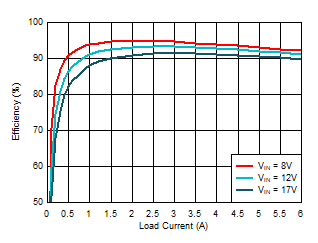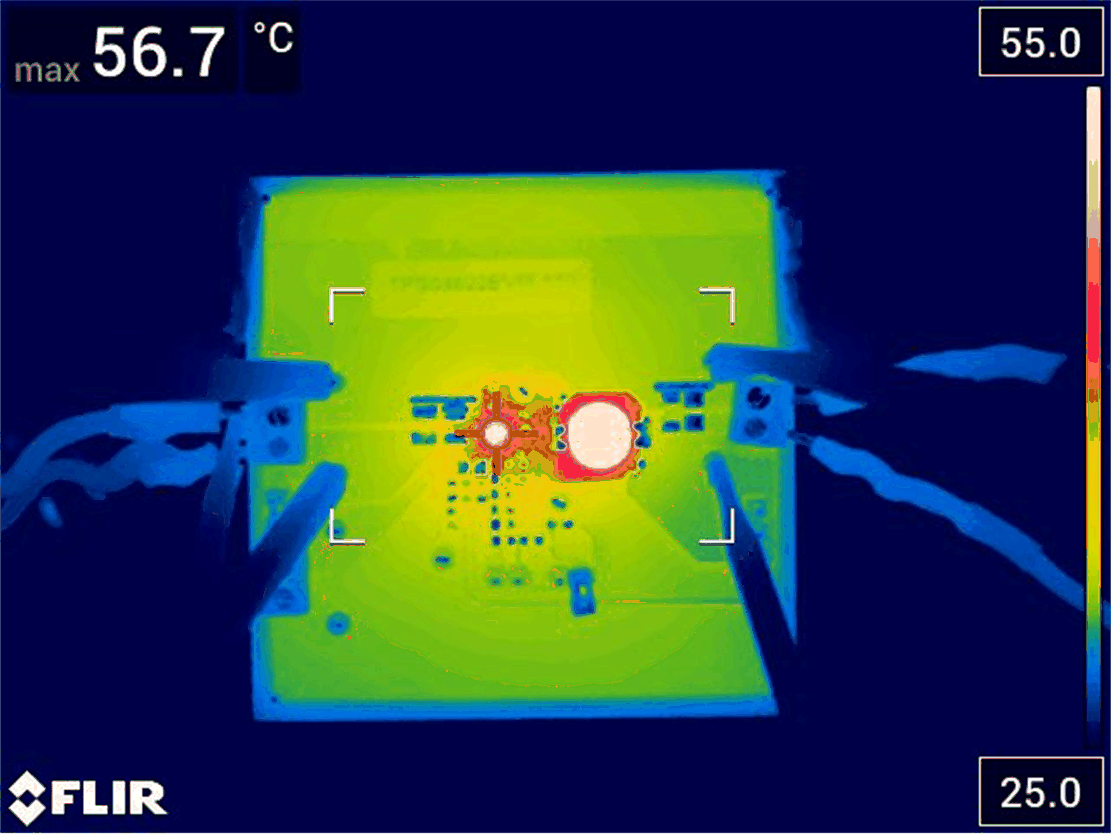SLVSFN6 December 2020 TPS54622-EP
PRODUCTION DATA
- 1 Features
- 2 Applications
- 3 Description
- 4 Revision History
- 5 Pin Configurations and Functions
- 6 Specifications
-
7 Detailed Description
- 7.1 Overview
- 7.2 Functional Block Diagram
- 7.3
Feature Description
- 7.3.1 Fixed-Frequency PWM Control
- 7.3.2 Continuous Current Mode Operation (CCM)
- 7.3.3 VIN and Power VIN Pins (VIN and PVIN)
- 7.3.4 Voltage Reference
- 7.3.5 Adjusting the Output Voltage
- 7.3.6 Safe Start-Up Into Prebiased Outputs
- 7.3.7 Error Amplifier
- 7.3.8 Slope Compensation
- 7.3.9 Enable and Adjusting Undervoltage Lockout
- 7.3.10 Adjustable Switching Frequency and Synchronization (RT/CLK)
- 7.3.11 Slow Start (SS/TR)
- 7.3.12 Power Good (PWRGD)
- 7.3.13 Output Overvoltage Protection (OVP)
- 7.3.14 Overcurrent Protection
- 7.3.15 Thermal Shutdown
- 7.3.16 Small Signal Model for Loop Response
- 7.3.17 Simple Small Signal Model for Peak Current Mode Control
- 7.3.18 Small Signal Model for Frequency Compensation
- 7.4 Device Functional Modes
-
8 Application and Implementation
- 8.1 Application Information
- 8.2
Typical Application
- 8.2.1 Design Requirements
- 8.2.2
Detailed Design Procedures
- 8.2.2.1 Custom Design With WEBENCH® Tools
- 8.2.2.2 Operating Frequency
- 8.2.2.3 Output Inductor Selection
- 8.2.2.4 Output Capacitor Selection
- 8.2.2.5 Input Capacitor Selection
- 8.2.2.6 Slow-Start Capacitor Selection
- 8.2.2.7 Bootstrap Capacitor Selection
- 8.2.2.8 Undervoltage Lockout Setpoint
- 8.2.2.9 Output Voltage Feedback Resistor Selection
- 8.2.2.10 Compensation Component Selection
- 8.2.2.11 Fast Transient Considerations
- 8.2.3 Application Curves
- 9 Power Supply Recommendations
- 10Layout
- 11Device and Documentation Support
- 12Mechanical, Packaging, and Orderable Information
Package Options
Mechanical Data (Package|Pins)
- RHL|14
Thermal pad, mechanical data (Package|Pins)
Orderable Information
8.2.3 Application Curves
 Figure 8-2 Load
Transient
Figure 8-2 Load
Transient Figure 8-4 Start-Up With
EN
Figure 8-4 Start-Up With
EN Figure 8-6 Output Voltage
Ripple With No Load
Figure 8-6 Output Voltage
Ripple With No Load Figure 8-8 Closed Loop
Response
Figure 8-8 Closed Loop
Response Figure 8-10 Load
Regulation
Figure 8-10 Load
Regulation Figure 8-12 Efficiency vs
Load Current
Figure 8-12 Efficiency vs
Load Current Figure 8-14 Junction
Temperature vs IC Power Dissipation
Figure 8-14 Junction
Temperature vs IC Power Dissipation Figure 8-16 Maximum Ambient
Temperature vs IC Power Dissipation
Figure 8-16 Maximum Ambient
Temperature vs IC Power Dissipation Figure 8-3 Start-Up With
VIN
Figure 8-3 Start-Up With
VIN Figure 8-5 Start-Up With
PRE-BIAS
Figure 8-5 Start-Up With
PRE-BIAS Figure 8-7 Input Voltage
Ripple With Full Load
Figure 8-7 Input Voltage
Ripple With Full Load Figure 8-9 Line
Regulation
Figure 8-9 Line
Regulation Figure 8-11 Tracking
Performance
Figure 8-11 Tracking
Performance
| VIN = 12 V | IOUT = 6 A |
 Figure 8-15 Maximum Ambient
Temperature vs Load Current
Figure 8-15 Maximum Ambient
Temperature vs Load Current Figure 8-17 Hiccup Mode
Current Limit
Figure 8-17 Hiccup Mode
Current Limit